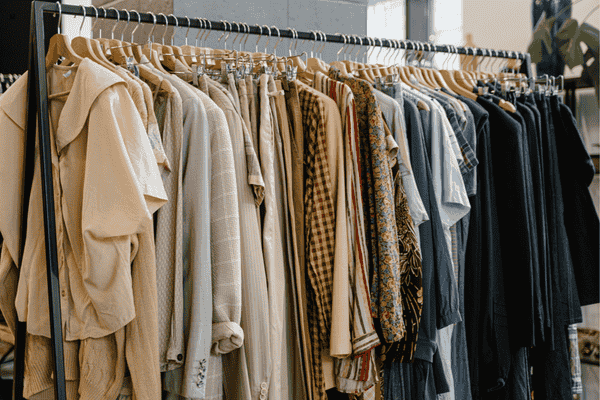
Introduction
In recent years, the rapid development of the global clothing market has attracted attention from all parties. According to the latest market research forecast, by 2025, the scale of the global clothing market will exceed 2.3 trillion yuan, showing a strong growth momentum. This figure not only reflects the upgrading of consumption, but also represents the infinite possibilities of innovation and change in the industry in the future. With the diversification of consumer demand, the rapid development of technology and the awakening of environmental protection awareness, the future of the clothing market will be full of new opportunities.
C
urrent Situation of the Global Clothing Market
The clothing industry is one of the largest consumer goods industries in the world, and the market performance of various countries varies. In the European and American markets, the growth of the clothing industry has stabilized, while emerging markets such as Asia and Latin America have shown strong growth. In particular, countries such as China, India and Southeast Asia are rapidly becoming important markets for global clothing consumption. According to data, the Chinese market will continue to lead the world in 2025 and is expected to account for a considerable share of the global clothing market.
Breakthrough in the Scale of the Clothing Market in 2025
According to the forecast of the Forward-looking Industry Research Institute, the global clothing market will reach 2.3 trillion yuan by 2025. This breakthrough in market size is not accidental, but the result of multiple factors. First, the gradual recovery of the global economy and the increase in per capita income have boosted consumer purchasing power. Second, the continued growth in consumer demand for personalized and customized products has driven the prosperity of high-end and luxury brands. Finally, factors such as environmental protection, sustainable fashion, and technological innovation are also driving changes in the apparel industry.
Changes in Consumer Trends
With the diversification of consumer demand, the traditional apparel market is facing tremendous pressure to transform. First, the increase in personalized and customized demand requires brands to pay more attention to the unique needs of consumers. From mass production to small batch customization, more and more brands are beginning to explore personalized product lines. Second, the evolution of fast fashion has given rise to consumers' high demands for "fast delivery" and "fashion pursuit". The rise of environmental protection and sustainable fashion has also begun to affect consumers' purchasing decisions, and more and more consumers are beginning to prefer green and environmentally friendly clothing.
The Rise of E-Commerce and Online Sales
In recent years, the rise of e-commerce platforms has greatly promoted the development of the apparel industry. Especially during the COVID-19 epidemic, online shopping has become the preferred method for consumers. According to the latest data, in 2025, the proportion of online sales in the global apparel market will further increase, and e-commerce platforms will become an important sales channel for apparel brands. Emerging sales models such as live streaming and social e-commerce also allow brands to reach target consumers more accurately.
Smart Technology Drives the Apparel Industry
With the continuous advancement of technology, the apparel industry is ushering in a digital transformation. From smart wearable devices to personalized recommendations based on AI and big data analysis of consumer preferences, technology is empowering the apparel industry. For example, "smart clothing" using smart sensors can be adjusted according to the wearer's body temperature, exercise status and other information. With the popularization of smart technology, the future apparel market will not only meet the basic needs of clothing, but will also develop in the direction of health, comfort, and intelligence.
Globalization and sSupply Chain Changes
Globalization has made the boundaries between clothing production and sales more blurred, and the rise of cross-border e-commerce has made it easier for clothing brands to enter the international market. However, the instability of the global supply chain, especially the supply chain crisis in recent years, reminds brands that they must pay more attention to the transparency and traceability of the supply chain. Consumers are paying more and more attention to the production process and source of products. How brands can ensure quality and sustainability at every link in the supply chain will become the key to future competition.
The Rise of Young Consumers
As the main force in the future consumer market, Generation Z and millennials are becoming the main consumer groups in the apparel industry. Unlike traditional consumer groups, these young people pay more attention to brand values, social responsibility and product uniqueness. The popularity of social media allows brands to interact directly with consumers, thereby increasing brand exposure and influence. Young consumers' purchasing behavior is also increasingly dependent on recommendations from social media, KOLs and short video platforms. How brands conduct precise marketing on these platforms will determine whether they can successfully attract this generation of consumers.
Future Growth Points
Against the backdrop of growing global environmental awareness, green and sustainable fashion has gradually become a core trend in the development of the industry. Consumers' increasing requirements for environmentally friendly materials and low-carbon production have prompted many brands to launch environmentally friendly series, using recyclable materials, environmentally friendly dyes, etc. At the same time, the rise of the circular economy has also made clothing recycling and reuse an emerging growth point in the industry. In the future, the apparel industry will promote sustainable growth in the market through more environmentally friendly design and production methods.
Brand Innovation and Differentiated Competition
In order to stand out in the fierce market competition, brands must continue to innovate. Innovation is not only reflected in product design, but also includes the shaping of brand culture, the updating of marketing strategies and the way of interacting with consumers. Personalized customization services, cross-border cooperation, and interactive marketing on social media will all become important means for brands to achieve differentiated competition.
Continued Growth of the Female Consumer Market
Female consumers have always been in a leading position in the clothing market, and this trend will continue to grow in the next few years. Women are becoming more and more independent and autonomous in clothing consumption, especially among young women, who have higher and higher requirements for brands, styles, designs, and functions. How brands meet the dual needs of female consumers for fashion, beauty, and comfort will directly affect the growth of their market share.
Competitive Landscape Between International Brands and Local Brands
With the development of globalization, the competition between international brands and local brands has become increasingly fierce. Although multinational brands have strong brand effects and financial advantages, they face challenges such as local cultural differences and changes in market demand. Local brands are closer to consumers, can respond quickly to changes in market demand, and have more opportunities for innovation. In future market competition, how multinational brands respond to localization challenges and how local brands expand their market share will become key factors in the development of the industry.
Investment Opportunities in the Clothing Industry
As the clothing market continues to grow, investors' interest in the clothing industry is also increasing. Especially in recent years, many emerging brands and innovative enterprises have emerged in the market and attracted a lot of investment. Whether it is the transformation and upgrading of traditional clothing brands or the rise of emerging brands, it has brought new investment opportunities to the capital market. Investors should pay attention to which segments have growth potential and seize market opportunities in a timely manner.
Challenges and Risks Faced
Although the apparel market has broad prospects, the industry also faces many challenges. First, the market competition is extremely fierce, not only the competition of traditional brands, but also the emergence of a large number of emerging brands. Secondly, changes in environmental policies have had a profound impact on the production costs and operating models of brands. Clothing brands need to find a balance between innovation and environmental protection, while effectively managing supply chains and inventory.
Conclusion
In general, the scale of the clothing market is expected to exceed 2.3 trillion in 2025, indicating that the clothing industry will usher in a broader development space. With changes in consumption trends, technological innovations, and environmental awareness, the clothing industry will enter a new stage of development. How brands adapt to these changes and seize market opportunities through innovation and differentiated competition will determine future success or failure.







